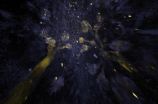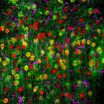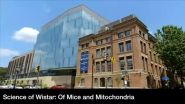(Press-News.org) TEMPE, Ariz. – New research shows that more than four billion years ago, the surface of Earth was heavily reprocessed – or mixed, buried and melted – as a result of giant asteroid impacts. A new terrestrial bombardment model based on existing lunar and terrestrial data sheds light on the role asteroid bombardments played in the geological evolution of the uppermost layers of the Hadean Earth (approximately 4 to 4.5 billion years ago).
An international team of researchers published their findings in the July 31, 2014 issue of Nature.
"When we look at the present day, we have a very high fidelity timeline over the last about 500 million years of what's happened on Earth, and we have a pretty good understanding that plate tectonics and volcanism and all these kinds of processes have happened more or less the same way over the last couple of billion years," says Lindy Elkins-Tanton, director of the School of Earth and Space Exploration at Arizona State University.
But, in the very beginning of Earth's formation, the first 500 million years, there's a less well-known period which has typically been called the Hadean (meaning hell-like) because it was assumed that it was wildly hot and volcanic and everything was covered with magma – completely unlike the present day.
Terrestrial planet formation models indicate Earth went through a sequence of major growth phases: accretion of planetesimals and planetary embryos over many tens of millions of years; a giant impact that led to the formation of our Moon; and then the late bombardment, when giant asteroids, dwarfing the one that presumably killed the dinosaurs, periodically hit ancient Earth.
While researchers estimate accretion during late bombardment contributed less than one percent of Earth's present-day mass, giant asteroid impacts still had a profound effect on the geological evolution of early Earth. Prior to four billion years ago Earth was resurfaced over and over by voluminous impact-generated melt. Furthermore, large collisions as late as about four billion years ago, may have repeatedly boiled away existing oceans into steamy atmospheres. Despite heavy bombardment, the findings are compatible with the claim of liquid water on Earth's surface as early as about 4.3 billion years ago based on geochemical data.
A key part of Earth's mysterious infancy period that has not been well quantified in the past is the kind of impacts Earth was experiencing at the end of accretion. How big and how frequent were those incoming bombardments and what were their effects on the surface of the Earth? How much did they affect the ability of the now cooling crust to actually form plates and start to subduct and make plate tectonics? What kind of volcanism did it produce that was different from volcanoes today?"
"We are increasingly understanding both the similarities and the differences to present day Earth conditions and plate tectonics," says Elkins-Tanton. "And this study is a major step in that direction, trying to bridge that time from the last giant accretionary impact that largely completed the Earth and produced the Moon to the point where we have something like today's plate tectonics and habitable surface."
The new research reveals that asteroidal collisions not only severely altered the geology of the Hadean Earth, but likely played a major role in the subsequent evolution of life on Earth as well.
"Prior to approximately four billion years ago, no large region of Earth's surface could have survived untouched by impacts and their effects," says Simone Marchi, of NASA's Solar System Exploration Research Virtual Institute at the Southwest Research Institute. "The new picture of the Hadean Earth emerging from this work has important implications for its habitability."
Large impacts had particularly severe effects on existing ecosystems. Researchers found that on average, Hadean Earth could have been hit by one to four impactors that were more than 600 miles wide and capable of global sterilization, and by three to seven impactors more than 300 miles wide and capable of global ocean vaporization.
"During that time, the lag between major collisions was long enough to allow intervals of more clement conditions, at least on a local scale," said Marchi. "Any life emerging during the Hadean eon likely needed to be resistant to high temperatures, and could have survived such a violent period in Earth's history by thriving in niches deep underground or in the ocean's crust."
INFORMATION:
Asteroid attacks significantly altered ancient Earth
Early Earth battered by giant asteroids, according to NASA research
2014-07-31
ELSE PRESS RELEASES FROM THIS DATE:
Mosaicism: Study clarifies parents as source of new disease mutations
2014-07-31
HOUSTON – (July 31, 2014) – Scientists have long speculated that mosaicism – a biological phenomenon, in which cells within the same person have a different genetic makeup – plays a bigger role in the transmission of rare disease mutations than is currently known. A study conducted by an international team of scientists led by Baylor College of Medicine sheds new light on the frequency of mosaicism in genomic disorders and its influence on recurrence risk.
The study, which was published today in the American Journal of Human Genetics, also included scientists from the ...
In high-stakes soccer, goalkeepers exhibit 'gambler's fallacy'
2014-07-31
When goalkeepers are pitted against multiple kickers in tense penalty shootouts, their attempts to dive for the ball show a predictable pattern that kickers would do well to exploit. After kickers repeatedly kick in one direction, goalkeepers become increasingly likely to dive in the opposite direction, according to an analysis of all 361 kicks from the 37 penalty shootouts that occurred in World Cup and UEFA Euro Cup matches over a 36-year period.
The findings reported in the Cell Press journal Current Biology on July 31 highlight the importance of monitoring and predicting ...
Selective logging takes its toll on mammals, amphibians
2014-07-31
The selective logging of trees in otherwise intact tropical forests can take a serious toll on the number of animal species living there. Mammals and amphibians are particularly sensitive to the effects of high-intensity logging, according to researchers in the Cell Press journal Current Biology on July 31 who conducted a meta-analysis of almost 50 previously published studies from around the world.
"Selective logging in the tropics is not a new phenomenon, and it will continue to be a common use of the forest," says Zuzana Burivalova of ETH Zurich, Switzerland. "We hope ...
See-through organs and bodies will accelerate biomedical discoveries
2014-07-31
The ability to see through organs and even the entire body to visualize long-range connections between cells as well as fine-grained cellular structures has been a long-time dream of biologists. A study published by Cell Press July 31st in the journal Cell has now made that dream a reality, revealing simple methods for making opaque organs, bodies, and human tissue biopsies transparent, while keeping the cellular structures and connections intact. The protocols could pave the way for a better understanding of brain-body interactions, more accurate clinical diagnoses and ...
Goalkeepers prone to 'gambler's fallacy' but penalty takers fail to exploit it
2014-07-31
After a string of penalties aimed in the same direction, goalkeepers are more likely to dive in the opposite direction on the next penalty but kickers fail to exploit this pattern, finds new UCL research.
The study, published in Current Biology, shows that penalty shoot-outs in international tournaments resemble a psychological game. The researchers studied penalty shoot-out videos from all World Cup and Euro finals tournaments between 1976 and 2012.
They found that each team of kickers produced more or less random sequences of kicks to the left or the right of the ...
Birthday matters for wiring-up the brain's vision centers
2014-07-31
Researchers at the University of California, San Diego School of Medicine have evidence suggesting that neurons in the developing brains of mice are guided by a simple but elegant birth order rule that allows them to find and form their proper connections.
The study is published online July 31 in Cell Reports.
"Nothing about brain wiring is haphazard," said senior author Andrew Huberman, PhD, assistant professor in the Department of Neurosciences, Division of Biological Sciences and Department of Ophthalmology, UC San Diego.
A mature, healthy brain has billions ...
New mapping approach lets scientists zoom in and out as the brain processes sound
2014-07-31
Researchers at Johns Hopkins have mapped the sound-processing part of the mouse brain in a way that keeps both the proverbial forest and the trees in view. Their imaging technique allows zooming in and out on views of brain activity within mice, and it enabled the team to watch brain cells light up as mice "called" to each other. The results, which represent a step toward better understanding how our own brains process language, appear online July 31 the journal Neuron.
In the past, researchers often studied sound processing in various animal brains by poking tiny electrodes ...
'Rewired' mice show signs of longer lives with fewer age-related illnesses
2014-07-31
VIDEO:
TRAP-1 is a protein vital for the production of chemical energy in the mitochondria of cells, but it is over-produced in tumor cells. The laboratory of Dr. Dario Altieri at...
Click here for more information.
While developing a new cancer drug, researchers at The Wistar Institute discovered that mice lacking a specific protein live longer lives with fewer age-related illnesses. The mice, which lack the TRAP-1 protein, demonstrated less age related tissue degeneration, ...
Drug target identified for common childhood blood cancer
2014-07-31
In what is believed to be the largest genetic analysis of what triggers and propels progression of tumor growth in a common childhood blood cancer, researchers at NYU Langone Medical Center report that they have identified a possible new drug target for treating the disease.
T-cell acute lymphoblastic leukemia is one of the most common and aggressive childhood blood cancers. An estimated quarter of the 500 adolescents and young adults diagnosed with the cancer each year in the U.S. fail to achieve remission with standard chemotherapy drugs.
In a cover-story report ...
Molecule enhances copper's lethal punch against microbes
2014-07-31
DURHAM, N.C. – Harnessing a natural process in the body that pumps lethal doses of copper to fungi and bacteria shows promise as a new way to kill infectious microbes, a team of scientists at Duke University report.
Publishing in the July 31, 2014, issue of the journal Chemistry & Biology, the researchers describe a way of exploiting the unique chemical response from the body's immune system to attack pathogens using copper, long known for its antimicrobial properties, in a way that minimizes harm to the rest of the body.
The findings in cell and animal models represent ...
LAST 30 PRESS RELEASES:
Decoupling the HOR enhancement on PtRu: Dynamically matching interfacial water to reaction coordinates
Sulfur isn’t poisonous when it synergistically acts with phosphine in olefins hydroformylation
URI researchers uncover molecular mechanisms behind speciation in corals
Chitin based carbon aerogel offers a cleaner way to store thermal energy
Tracing hidden sources of nitrate pollution in rapidly changing rural urban landscapes
Viruses on plastic pollution may quietly accelerate the spread of antibiotic resistance
Three UH Rainbow Babies & Children’s faculty elected to prestigious American Pediatric Society
Tunnel resilience models unveiled to aid post-earthquake recovery
Satellite communication systems: the future of 5G/6G connectivity
Space computing power networks: a new frontier for satellite technologies
Experiments advance potential of protein that makes hydrogen sulfide as a therapeutic target for Alzheimer’s disease
Examining private equity’s role in fertility care
Current Molecular Pharmacology achieves a landmark: real-time CiteScore advances to 7.2
Skeletal muscle epigenetic clocks developed using postmortem tissue from an Asian population
Estimating unemployment rates with social media data
Climate policies can backfire by eroding “green” values, study finds
Too much screen time too soon? A*STAR study links infant screen exposure to brain changes and teen anxiety
Global psychiatry mourns Professor Dan Stein, visionary who transformed mental health science across Africa and beyond
KIST develops eco-friendly palladium recovery technology to safeguard resource security
Statins significantly reduce mortality risk for adults with diabetes, regardless of cardiovascular risk
Brain immune cells may drive more damage in females than males with Alzheimer’s
Evidence-based recommendations empower clinicians to manage epilepsy in pregnancy
Fungus turns bark beetles’ defenses against them
There are new antivirals being tested for herpesviruses. Scientists now know how they work
CDI scientist, colleagues author review of global burden of fungus Candida auris
How does stroke influence speech comprehension?
B cells transiently unlock their plasticity, risking lymphoma development
Advanced AI dodel predicts spoken language outcomes in deaf children after cochlear implants
Multimodal imaging-based cerebral blood flow prediction model development in simulated microgravity
Accelerated streaming subgraph matching framework is faster, more robust, and scalable
[Press-News.org] Asteroid attacks significantly altered ancient EarthEarly Earth battered by giant asteroids, according to NASA research




